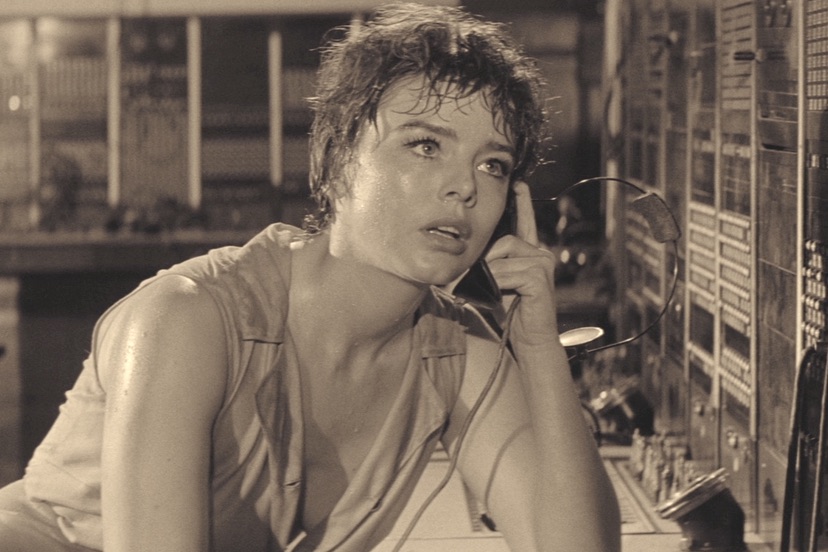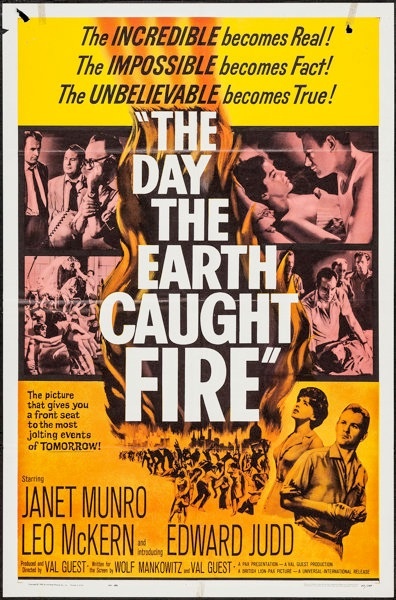It’s been hot in Pagosa Springs these past couple of weeks.
I would even say, unpleasantly hot.
But not as hot as in some other places. Phoenix hit 110 degrees for a record-breaking 19th consecutive day on Tuesday, and the temperature kept climbing to a new daily record of 118 degrees. Grand Junction, Colorado, hit 107 degrees on Monday, breaking the prior July 17 record of 104 degrees. AccuWeather says high temperatures in Houston will hit at least 100 degrees every day from July 17-21.
But people continue to fall in love, anyway.
I didn’t get to see the apocalyptic film, The Day the Earth Caught Fire, when it hit the movie theaters in 1961, because my mother and father were still dating and didn’t believe in premarital sex. That is to say, I wasn’t yet born.
They did go together to see The Day the Earth Caught Fire, however, and that may have been part of the reason they got married shortly thereafter. After all, it was a love story. A really, really sad love story. But still, a love story.
The film — which I watched on the small screen, many years later — features a lot of sweaty people with British accents, worried about the fate of the world. (The story is set in London, which explains the accents.) It seems that, by an unhappy coincidence, the Russians and the Americans had tested separate nuclear weapons — really powerful nuclear weapons — at the exact same moment, near the north and south poles, resulting in the earth getting thrown out of orbit. As the movie progresses, the newspaper reporters finally figure out what the scientists and politicians have been hiding from us… that the earth is now drifting slowly towards the Sun, causing droughts, tornadoes, and heat stroke.
The hero is an alcoholic newspaper reporter, something I can obviously relate to.
An emergency public message by the British Prime Minister comes out. Desperate times have pulled humanity together (finally!) and all the world’s nuclear powers have agreed that “drastic conditions demand drastic measures”. All existing nuclear bombs were to be transported to Siberia and placed in intervals “100 miles apart”. The hope is that this combined blast (at a scientifically determined moment) will shift the planet’s orbit back where it belongs. No one has any real idea if it will work… but they have to try something. Being scientists, and engineers.
In the meantime, the hero has fallen in love with a beautiful switchboard operator, and vice versa. The film reminds us that, once the earth starts falling towards the Sun, there’s not much an alcoholic newspaper reporter and a beautiful switchboard operator can do, except make mad passionate love. (Another attraction for me, as a movie fan. I also hope to be madly in love when the world ends.)
As I mentioned, this film came out in 1961, and may have been responsible for frightening Russia and America into signing the Nuclear Test Ban Treaty in 1963.
Now we find out, 50 years later, that it’s not nuclear bombs that are bringing about the end of the world, but greenhouse gases — CO2 and methane — emanating from our cars, factories, electrical generating plants, gas wells, and beef cattle.
The Nuclear Test Ban Treaty didn’t help one bit. And neither would all the existing nuclear bombs, transported to Siberia and placed at intervals 100 miles apart and detonated at a scientifically determined moment. The scientists and engineers who invented and created all the wonderful machines and factories and plastics and oil wells and genetically-modified beef cattle, that are now helping to set the world on fire, have no idea how to undo what they’ve done.
Sure, we can still fall passionately in love. But what good will it do?
On the other hand, it wouldn’t hurt.
The title for this column, “The End of the World is Just a Destination”, was inspired partly by the fact that there’s an unofficial ‘park’ near the mouth of the Industrial Canal in New Orleans that the locals have named ‘The End of the World’.
An actual destination.

From an April 2022 article by Nathaniel Adams on Chron.com:
Canal-side, herons and cormorants stalk at water’s edge as the absurd pelican sits on the edge of a bollard with the hauteur befitting an official state bird. The city side of the levee is dominated by a hulking brutalist naval base, shuttered since 2011, that’s now home to squatters, transients, scrap metal-hunters who have stripped it down to the window frames, and battalions of feral raccoons. Inscribed along the base’s great barrier, a message in graffiti two stories tall: “OPEN YOUR EYES.”
If I had the courage, I would also like to write that message, two stories tall.
Underrated writer Louis Cannon grew up in the vast American West, although his ex-wife, given the slightest opportunity, will deny that he ever grew up at all. You can read more stories on his Substack account.


